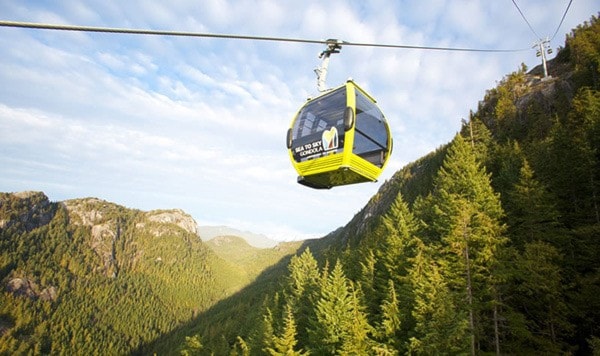(Part four of the News' series on city management. Part one here, part two here, part three here. Detailed salary database here.)
Having recently been named one of the New York Times’ Top 52 Places to Visit, Squamish clearly pulls out all the stops.
Once just a pit stop on the way from Vancouver to Whistler—remind you of anywhere?—Squamish has hit the big leagues.

The $22 million Sea-to-Sky Gondola, which opened in 2014, put Squamish onto the New York Times list but that’s not the only thing Squamish has done right.
It’s a beautiful city and it’s no wonder. Not only is it surrounded by rivers, mountains and forests just like Port Alberni, but Squamish budgeted twice as much money to take care of that stunning scenery in 2013. Squamish spent $1.1 million while Port Alberni only $591,000.
Economic development also saw fewer dollars on the Port Alberni side: only $284,000 compared to $310,000 in Squamish.
Somewhere else Port Alberni spent less? City management. Squamish had 33 managers making more than $75,000 in 2013. In Port Alberni, only 18 managers made that much. That equates to an enormous difference in expenditures too: $3.3 million for Squamish compared to $1.7 million for us.
Squamish spends almost one in every $10 it collects in operating revenue on its management. Port Alberni spends just under one in $20.
And despite spending more, Squamish is doing well. In 2013, property values in Squamish were close to four times what they were in Port Alberni.
Properties in Squamish aren’t only more valuable than those in Port Alberni, they’re cropping up at double the rate, too. In 2013, Squamish issued twice the building permits that Port Alberni did.
Squamish is ahead of Port Alberni in other ways too: as of 2015, they’re collecting curbside food and yard waste. While Port Alberni is headed that way, we won’t see curbside organics pickup for years to come.
They’re also ahead in reducing greenhouse emissions; while the Sea-to-Sky gondola is for recreational use only, Squamish expanded its bike lane network by 220 metres in 2013.
Port Alberni on the other hand created a grand total of zero metres of bike lanes in the same period.
All of that is clearly paying off. While with 17,743 residents Port Alberni is 585 people bigger than Squamish, that’s unlikely to remain the case.
Between 2006 and 2011, Squamish’s population skyrocketed by 15 per cent. Port Alberni on the other hand remained all but stagnant at one per cent.
Maybe it’s time to take a look at what other, more successful, communities are doing right.
Correction: An error was made in last week’s infographic that stated that city manager Ken Watson earned three per cent more than average salary. Upon redoing our math, we realized that he makes only $505 more than average, effectively zero per cent.
